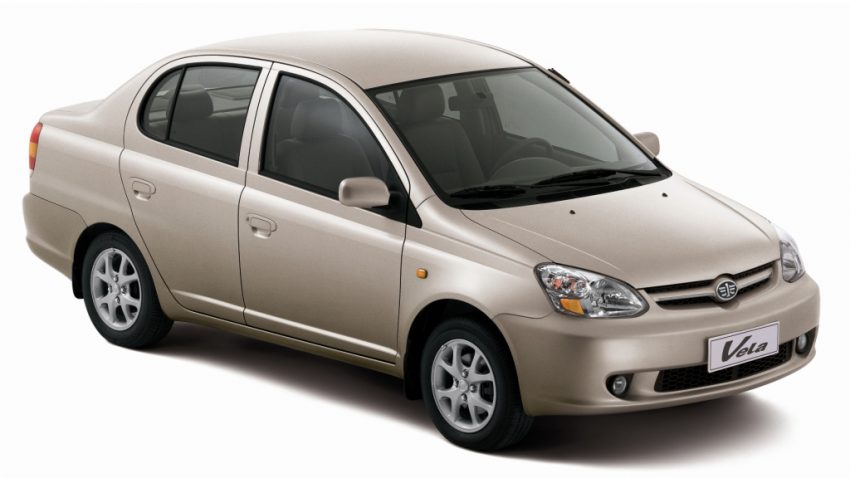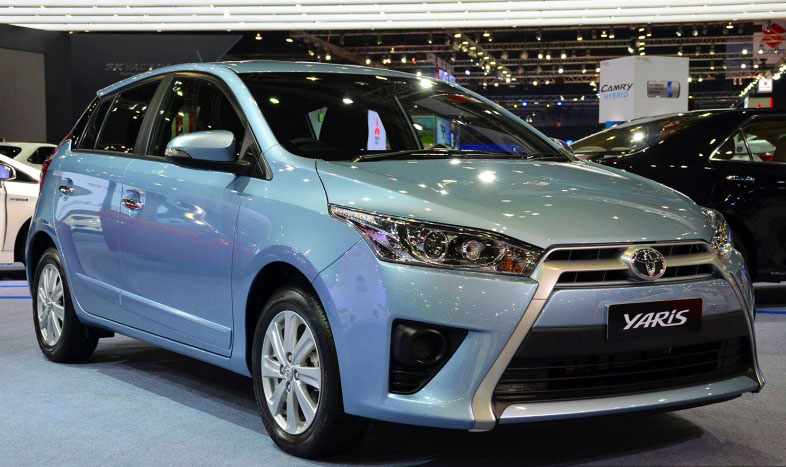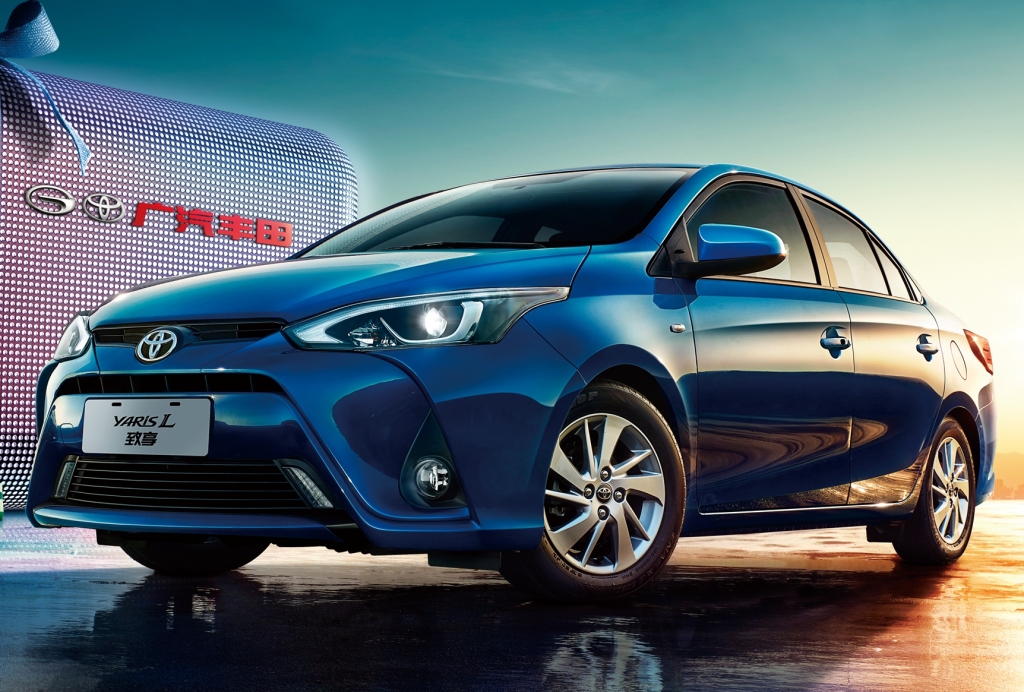Indus Motor Company (IMC) introduced the new Yaris sedan as a replacement for 1.3L Toyota Corolla variants in Pakistan. This is the first the IMC is offering a locally assembled sedan other than Corolla ever since it started rolling out the first locally assembled Corolla back in May 1993.
Related: Can Yaris Fit in the Shoes of Toyota Corolla
Yaris, which is named after a Greek goddess symbolizing beauty & elegance, was originally an export name for the Vitz hatchback; however, each generation of its sedan iterations was sold in different markets with different names. From the 4th generation model which was introduced late last year, Toyota officially discontinued the Vitz nameplate in Japan hence the Yaris badge will now be implied in the Japanese domestic market as well.
Various generations of Toyota Yaris hatchback
Let us look at the different generations of Toyota Yaris, each of which was available in Pakistan coming in as used imports under different names.
First Generation (XP10) 1999-2005
First-generation Yaris sedan
The first generation appeared in 1999 as a successor to the Starlet hatchback & Tercel subcompact sedan from the 70s. Built on Toyota’s NBC (New Basic Car) platform, the hatchback version was called Vitz in its home market and Yaris in the rest of the world, whereas the sedan was called Platz in Japan, Echo in Australia & North American markets & Yaris sedan in other parts of the world. In the Chinese market, the sedan was sold by FAW (Toyota’s partner in China) with the Vela nameplate.

Platz, which comes from a German word that defines spaciousness, appeared in our market as a used JDM import. Most of these cars had a 1.0 liter 1SZ-FE engine, the same as Vitz. However, 1.3-liter versions with a 2NZ-FE engine were also available in limited numbers. It was available with a 5-speed manual and 4-speed automatic transmission however the majority of the vehicles that landed here were equipped with an automatic gearbox.
Toyota Platz pre-facelift & facelift
Its lifespan was between 1999 and 2005, the pre-facelift was available between 99 and 2002 after which the facelift with revised front & back styling was introduced & was available till 2005. The Platz measured 4,145mm in length, 1,660mm in width, and 1,500mm in height while having a wheelbase of 2,370mm. The facelift however was slightly longer at 4,180mm due to different bumper designs.
Second Generation (XP90) 2005-2013
Second-generation Yaris sedan

The second generation was introduced in 2005 and while the hatchback retained the Vitz/ Yaris nameplate for Japanese domestic & international markets respectively, Toyota dropped the Platz nameplate for the sedan version and instead named it Belta– the name which translates into Beautiful in Italian. In certain Asian markets, the car was also called Vios, which is derived from a Latin word meaning ‘to move forward’. To find out more interesting car names & their meanings, click here.
Related: Is It the Right Time to Launch Toyota Yaris in Pakistan?
Belta again appeared in our market as a used import and was powered by a 1.0 liter 1KR-FE engine, however, 1.3L engine variants were also available in limited numbers. The Belta came equipped with a CVT gearbox, although 5-MT/ 4AT options were available for international markets.
Toyota Belta pre-facelift & facelift
The Belta was built on Toyota B-platform and measured 4,300mm in length, 1,700mm in width, and 1,480mm in height while having a wheelbase of 2,550mm. It was considerably longer and wider than the first generation (Platz) and had a longer wheelbase too which resulted in a more spacious cabin. However, it stood marginally shorter and was nearly 110kg heavier than its predecessor. After 3 years, the Belta received minor cosmetic enhancements in 2008 and was replaced by the third-generation model in 2013.
Third Generation (XP150) 2013-Present
2013 Vios XP150
With the third generation, the Yaris range became a lot more complicated in terms of naming conventions. While the third generation Yaris hatchback (codenamed XP130) debuted in 2011, its sedan derivative (XP150) arrived in 2013. However, in North American markets, Toyota sells a different Yaris which is a rebadged Mazda2– due to a Toyota-Mazda partnership.
Related: Official 2020 Toyota Yaris Brochure is Out
The third-gen XP130 hatchback retained the Vitz/ Yaris nameplate for Japanese domestic & international markets respectively, while the sedan was marketed as Vios, which is derived from a Latin word that means ‘to move forward’. Later in 2017, a new sedan variant of the same XP150 appeared as the Yaris sedan in various Asian and Caribbean markets.

Interestingly in a few Asian markets, the Vios carries the Yaris nameplate and vice versa in others. In China where Toyota has two different joint venture partners namely FAW-Toyota and GAC-Toyota, each sells its own stylistically different version of XP130/150 in both hatchbacks as well sedan forms named Vios and Yaris respectively. China also gets a longer wheelbase version of both these cars.
A long-wheelbase Toyota Yaris-L in China
The 3rd gen XP150 Yaris sedan we have here rides on the Toyota B-platform and measures 4,425mm in length, 1,730mm in width, and 1,475mm in height while having a 2,550mm wheelbase. Although the XP150 Yaris sedan is larger than the second-generation XP90 Belta, it’s considerably shorter than the 11th gen 1.3L Corolla which it replaces here.
Toyota Yaris XP150 in Pakistan
The third generation Yaris sedan appears with different engine configurations depending on the market where it’s offered. For our market, there is a 1.3 liter (1329cc) 1NR-FE unit that produces 98hp and 123Nm, and a 1.5 liter (1496cc) 2NR-FE engine that punches out 106hp of power and 140Nm of torque. The engines are paired either to a 5-speed manual or a 7-speed CVT gearbox.
Related: Peeping Into the New Thai-Spec Toyota Yaris Ativ Facelift
The Toyota Yaris XP150 facelift was introduced this year in markets including the Philippines (where it is marketed under the Vios nameplate), Thailand, and Vietnam and is soon going to be introduced in Malaysian markets. The front end of the Yaris facelift gets a thoroughly revised fascia while the rear end & interior remain largely unchanged in terms of designs. However, on the safety forefront, the car has received some worthy upgrades while retaining the same set of engines.

Fourth Generation (XP210) 2020-Onwards

Based on the TNGA (Toyota New Global Architecture) modular platform, the fourth generation XP210 Yaris hatchback was unveiled in October last year and officially went on sale earlier this year. With this generation, Toyota discontinued the Vitz nameplate in its home market in Japan thus the hatchback will now carry a unified Yaris nameplate across the globe.
The 4th gen Yaris sedan
For the first time, the 4th gen Yaris sedan has a different DNA than the hatchback version. Instead of the XP210 chassis code, the new AC100 model that debuted in August 2022, sits on DNGA (Daihatsu New Global Architecture). Beginning its journey from Thailand, the new Yaris sedan has already been introduced in markets including the Middle East, South America, and various ASEAN markets where it is also marketed as Vios.
Edit 1: Yaris facelift details updated (November 2020)
Edit 2: 4th gen Yaris sedan details added (April 2023)

A computer animation professional with over 23 years of industry experience having served in leading organizations, TV channels & production facilities in Pakistan. An avid car enthusiast and petrolhead with an affection to deliver quality content to help shape opinions. Formerly written for PakWheels as well as major publications including Dawn. Founder of CarSpiritPK.com







































